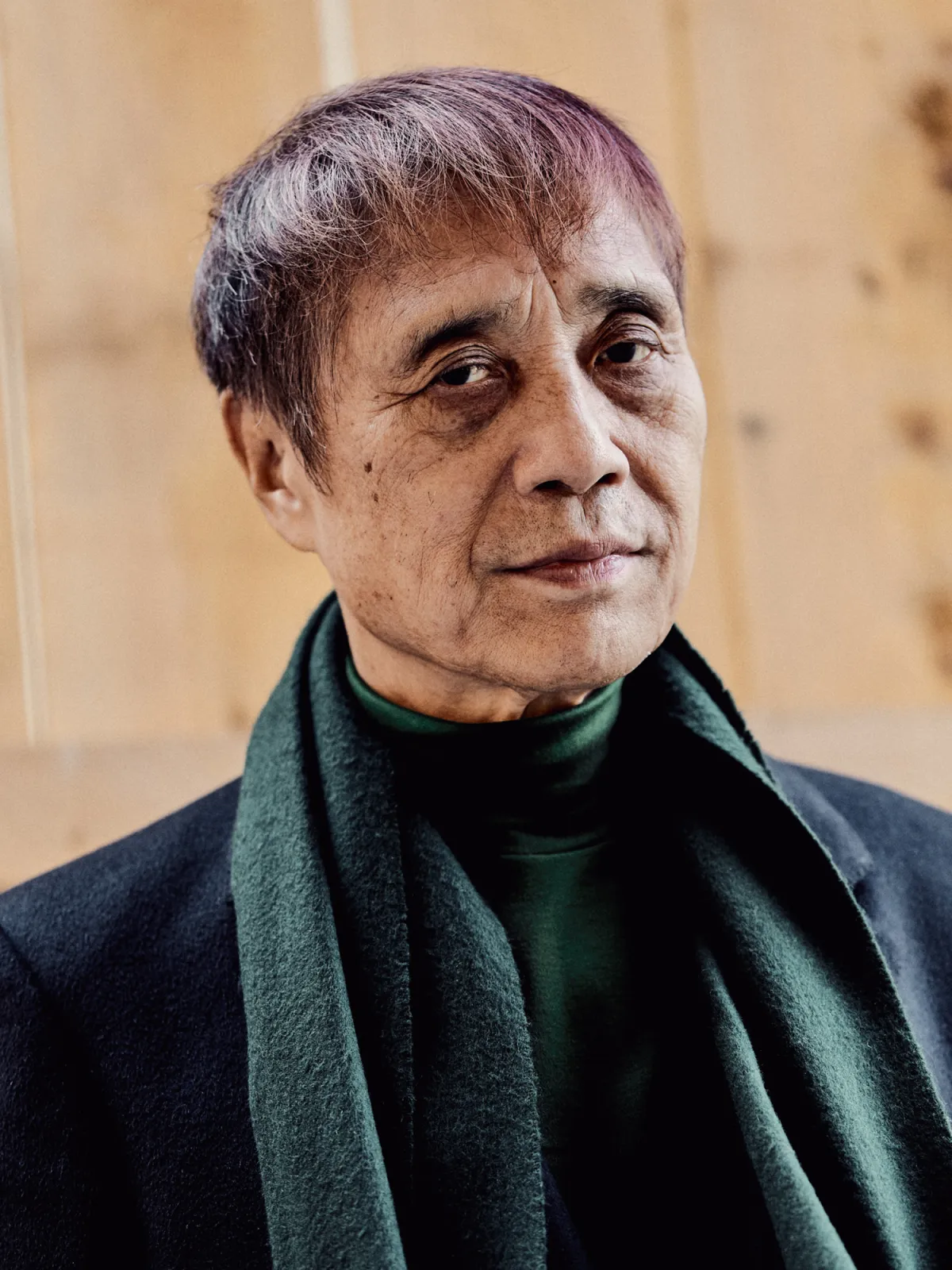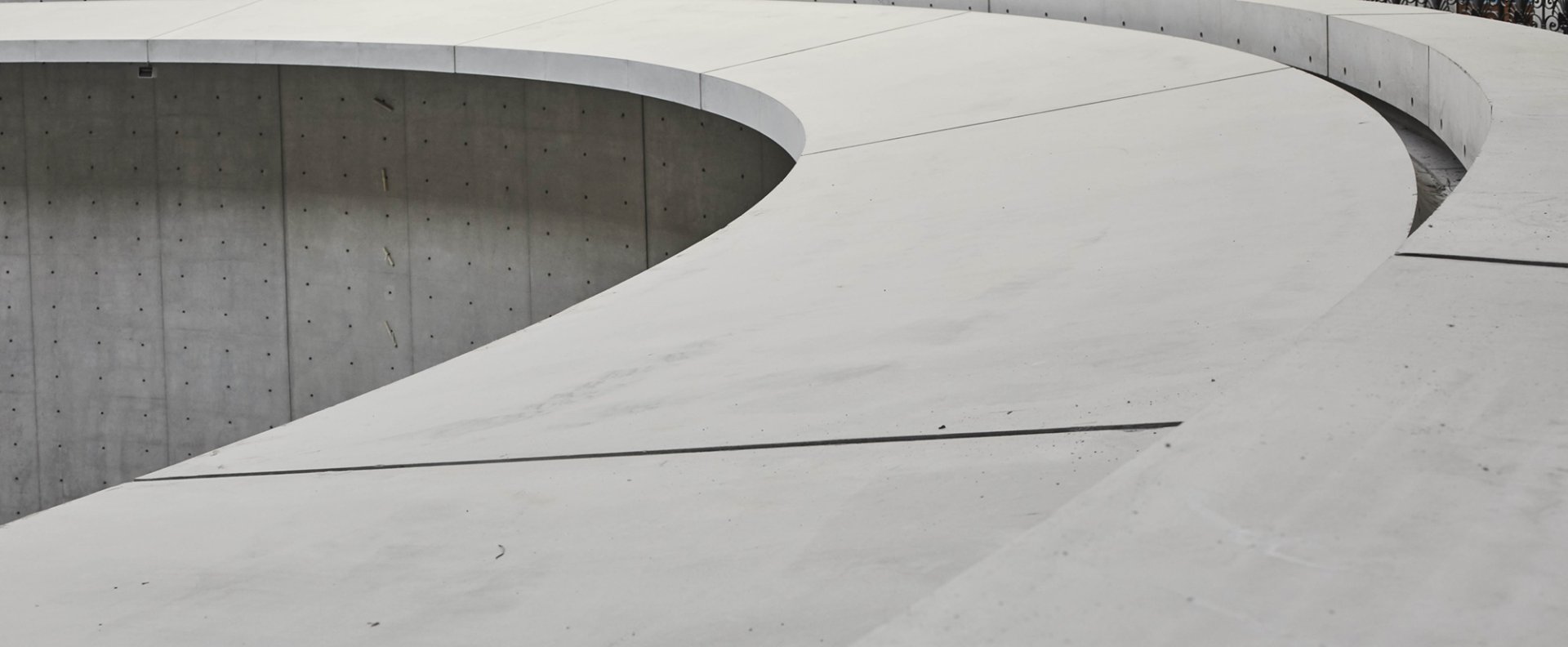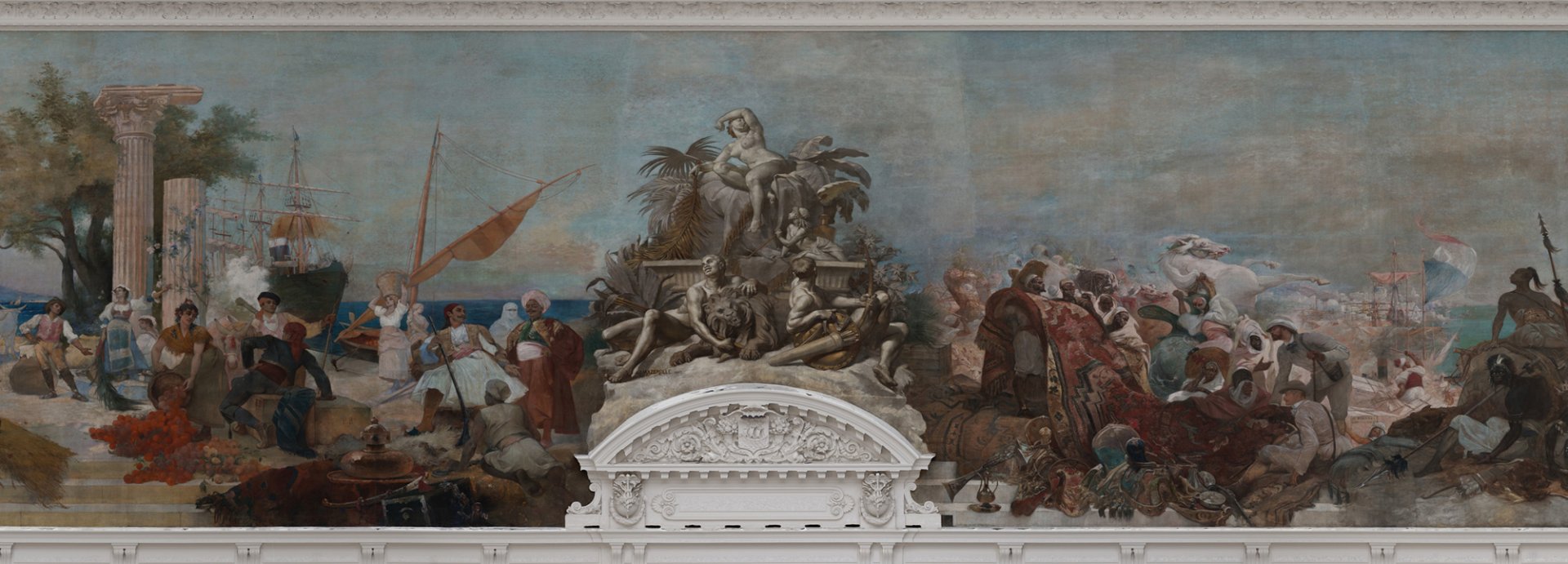
Tadao Ando: “I drew a circle in the circle.”
The structuring element of the project to transform the Bourse de Commerce echoes the founding principal of the building: its circularity. Tadao Ando made his architectural contribution by intervening within the building, in dialogue with its historical elements, which were meticulously restored.
In your view, what will be the visitors reaction when they will discover the cylinder?
When you enter the Rotunda of the Bourse de Commerce, you are welcomed at the very heart of this intensely impressive cylinder.
At this stage, visitors may wonder where they are. Their curiosity is aroused. I wanted to create a place that would lead them to ask questions. Are we taking a step forward into the future? Or back into the past? Or would we prefer to stay in the present?
In my opinion, for this particular building, there was no other alternative than this circle.
At the Punta della Dogana in Venice, I inserted a cube into the existing triangular building. The square, the circle ... These are all original shapes. Yet these first forms are not that easy to understand. In order to be correct, they need to be radical.
Here we are at the top of the cylinder that you erected in the centre of the Bourse de Commerce, under a thirty-five-metre-high glass dome, nine metres above the ground. How did the design for this form come about?
The first vision I had of the Bourse de Commerce immediately inspired me to create, at the heart of this 18th and 19th century building, an architecture within an architecture that would remain engraved in the minds of people for another two or three centuries. I drew a circle in the circle, magnified by an exemplary restoration of the existing one. This emblematic form is significant in terms of the Gutaï artistic movement and artist Jirō Yoshihara, who was its leader. Kitaro Nishida, the first and the last true Japanese philosopher also tirelessly drew circle after circle. I aspired to the infinity of the circle and its limitless potential.
Is there a magic formula for the concrete for which you are now famous?
Reinforced concrete was born in France circa 1898, if I remember correctly. A craftsman successfully developed the fabrication process for reinforced concrete with wire, cement and gravel. The 20th century ushered in the era of concrete. Reinforced concrete is now available all over the world. It is a challenge to use this material, which is now commonplace and extremely popular, and to create an architecture that does not exist anywhere else.

“If my concrete succeeds in evoking a new world, then my dream will have become a reality.”
What role does the light play in the Rotunda of the Bourse de Commerce?
The light shifts continuously. As the day progresses, the interior space constantly changes its appearance. The architecture is alive, animated. Nevertheless, to breathe life into it, it requires a human presence and of course, light. The position of the sun, whose rays penetrate the building, is different for each season, as is also the case in the famous Pantheon in Rome, bathed in the light pouring through the oculus at the top of its dome. With the building in Paris, the diameter is sixty metres; the Rotunda within it measures thirty-eight metres. I aspired to create a universe within this space. On entering it, if visitors can feel the existence of this universe and become aware of their own aliveness, my ideal will have been attained: here is a place that invites you to meet yourself.

“On entering it, if visitors can feel the existence of this universe and become aware of their own aliveness, my ideal will have been attained: here is a place that invites you to meet yourself.”
One of the paintings of the Panorama du Commerce represents Japan. What does this painting inspire in you?
Exhibitions like World Fairs allowed Japanese works of art to arrive in the West on a massive scale, to be exhibited there, particularly prints. These inspired painters such as Van Gogh, Renoir and Monet. However, most European artists imagined Japan in their own way because they had never been there themselves. Monet imagined his own version of Japan through numerous paintings. In Giverny, his so-called Japanese garden is not at all Japanese in essence. It is precisely this gap that is interesting. Monet recreated an imaginary Japan, his vision of Japan. This is what makes it a work of art.
And indeed, this is what art is. Many painters painted what they imagined, what they fantasized about. In their own way. For me, this painting is very strange and rather unusual. Does it represent China or Japan? It represents an Asia that at the time, in the collective imagination, was one and the same entity for Westerners, both unique and indistinct. I don't suppose any of them had ever truly visited Japan. Therefore, it is interesting and amusing to see how they envisioned it.